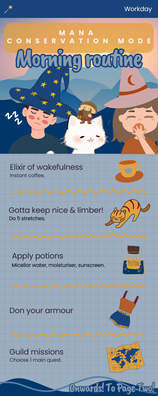Chasing imperfection
- Wendy White

- May 18
- 6 min read
For much of my life, I've responded (often internally, sometimes externally) to praise with: "Thanks - it could have been better though."
Because it could have been. If I'd had another two weeks, slightly more patience, slept better that week, had a little more time to practice, gained access to slightly better tools, not been recovering from a cold - the list is endless - I could have done better. The "better" in question could be an improvement of 15% or 0.0015%, and either way, it weighs on me.

Exhausting, I know. In my defense, it has driven me to continual learning and growth... when it isn't driving me to burnout. We all develop coping mechanisms and paradigms to manage various challenges to existence as our brains develop over time. Not all of them are good ones.
There are two ways to approach the less beneficial mental patterns we find ourselves stuck in once those foundational neural pathways are laid:
self-reflection, external guidance and consistent effort to shift the shape of the mind (worthwhile, but a mid-to-long term approach) and
building tools and mental shortcuts that help us break out of unhelpful thought patterns in the moment (if you're lucky, you might see improvement right away)!
Designing an imperfect routine
Seems like every influencer and CEO has some kind of killer morning routine. Wake up at 4am, do a headstand, down a glass of Protein Juice™ and have written 10,000 words for their latest novel by 6am.
I've tried many, many times to come up with the routine - the one that will guarantee my day goes well, I do the best I could possibly do, and I end the day 100% satisfied with my life.
Yeah. Perfectionism and unrealistic expectations love to hang out together!
Unsurprisingly, this has not gone well for me. I try Routine #384 for a month, a week, or a day... and I crash and burn. I don't get the results I want, and I don't feel good trying to get them, either. And go back to winging it.

So this weekend I decided to try attacking one of my underlying broken mental models here - the idea that with enough planning (and sticking to said plan) I can actually completely control the outcome of a single day. When in reality, days are messy. Family members get sick. I get sick. A client sheds their budget for external contractors overnight. A project's delivery date is suddenly a month earlier. The roof springs a leak. Your air conditioner breaks on a 42ºC day. You discover black mould has grown in the cavity behind a wall in your bathroom. Someone you love passes away without warning.
All of these things have happened to me. None of them could have been prevented by me drinking 8 glasses of water before lunchtime.
Also: a fantastic evening routine does not guarantee I sleep well, or even at all. My energy levels, emotional state and mental and physical agility will vary each morning based on many factors, only a handful of which are under my control.
So rather than hold myself to a static ideal that sets me up for regular disappointment, I decided to try a tiered approach. And because somewhere deep down inside me there is a graphic designer suffocating underneath a mountain of JavaScript and knowledge management guidelines, I decided to make myself some cute posters to motivate me to actually do it.
I put on my cloak and wizard hat
Even though I generally prefer science fiction over fantasy when it comes to books and movies, there's nothing that gets me fanging for an action montage like a Dungeons and Dragons party gearing up for a quest. So I decided to work that metaphor into my posters.

I thought for a while about how to visually represent my energy levels. My project management experience has me super familiar with the traffic light approach - green is good, amber a warning and red means danger. But honestly, when using those systems, any time I see anything other than green, I feel like a failure.
So instead, I am using this colour system:
High capacity: purple & green (growth, clarity, magical power).
Medium capacity: yellow, pinhttp://task.Herek and teal (emotional warmth, gentleness/calm, spark of energy/sunshine).
Low capacity: deep, rich blue and amber (restful, embers of hope, like a campfire at sunset).
Start with the best outcome - then make it worse
While I love laying out words and text, I'm slow to create artwork - fortunately my Canva subscription includes access to a ton of stock graphical elements and templates.
For my first attempt, I used this evening routine template by Procrea. I liked the fonts, overall layout and the icons linked to each task. Here's their template prior to me making any edits to it:

And here's what I came up with for my high-, medium- and low-capacity versions of my own morning routine, designed as double-sided infographic flyers, using the above template as a base.
The wands at the top-left represent my capacity level in addition to the colour scheme, and the "Workday" at the top-right is because I intend to write a version of these that is tailored to the three days a week when I am a full-time parent. I also plan on doing versions for a midday re-centring routine, and an evening wind-down routine.
Oh no! My imperfect routine approach is, itself, imperfect!
Obviously the art styles are very inconsistent, given they're a combination of different Canva stock images, but I'm still actually still quite happy with how they look.
However, as I worked through these designs, I realised two things:
The capacity colour schemes actually look a lot more like they are implying morning, midday and evening. Given I eventually want to do routines for all three of these time periods, I think I should ditch the colour-as-capacity styling in future versions and just use them to represent the time of day instead.
Some tasks are harder than others. In practice, some mornings I might be totally up to setting three key tasks for the day, but find myself too exhausted to brew anything other than instant coffee first thing. So really I need a grid approach, not three separate routines.
So I decided to try again, this time with a single chart (though this one is still focused on workdays, not my parenting days). This time, I used a template by Murez Alsyad as a base:

And here is my customised version 1.0 of the all-in-one workday morning routine chart:

This is also imperfect. While it's more compact and lends itself to choosing the tier I feel is appropriate per task, it also makes my eyes glaze over a little with how much detail is on this one page. I also miss having my cutesy titles for each task; I went with icons-only this time to try and reduce the amount of text on the page.
Hm. This whole perfectionism thing is really hampering my attempts to resolve the whole perfectionism thing. That said...
This isn't only about perfectionism. It's also about reducing decision fatigue.
My struggles with perfectionism were a handy way to frame this article, but also, I just find it really draining remembering everything I need to do every morning, and dynamically tailoring my approach based on today's exact flavour. I earn money by deep-diving into complex research and data, making a bunch of small and large decisions, and coming up with bespoke solutions. The less cognitive load I can have in the rest of my day, the better. I just want an adaptable routine that lets me spend all my thinking energy on things that really need it.
So, what I've done now is requested a print version of both my double-sided pamphlet pages and my overview chart, and I'm going to try them out for a few weeks and see if they helps. They need to be physical artefacts - for stuff this important, I need it on my wall.
The most powerful tools in my life for keeping me focused on what matters are my custom yearly, monthly and weekly goal posters (will have to post about them another time...) and if these new posters could perform a similar service but for reducing all the mental energy I currently spend making repetitive daily decisions, then it will be worth it 100 times over.
It will, in fact, be perfect.














